Sarah L. Johnson's Blog, page 129
June 12, 2012
Bits and pieces
I'm back from BEA. I won't be making a lengthy report, although I will say that historical fiction was out in full force, and I mailed home a large box. It was great to meet up with many book friends and publicists, and the shelves where I keep to-be-reviewed books are full and have moved on to an overflow area.
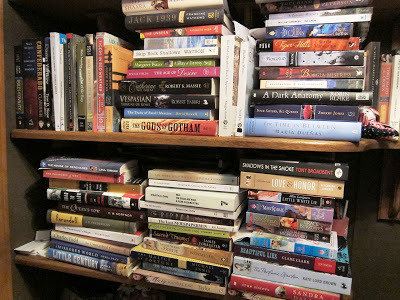 Historical fiction shelf extravaganza! Click to enlarge.The books in the photo are a mix of ARCs for the Historical Novels Review (to be assigned and mailed in early July), personal review copies for the blog, recent purchases/trades, and more. I honestly can't recall ever being so overwhelmed with literary goodness, and I haven't even shown you a photo of my desk, which has books piled 2' high around my monitor and 3' high on the floor on either side.
Historical fiction shelf extravaganza! Click to enlarge.The books in the photo are a mix of ARCs for the Historical Novels Review (to be assigned and mailed in early July), personal review copies for the blog, recent purchases/trades, and more. I honestly can't recall ever being so overwhelmed with literary goodness, and I haven't even shown you a photo of my desk, which has books piled 2' high around my monitor and 3' high on the floor on either side.
 This was the 3rd year of the Book Blogger Con, now renamed the BEA Blogger Conference. Although I attended in 2010 and 2011, I didn't attend this year, and from all I've been reading, this was a wise move. My husband and I met up with my fellow HNR reviews editor Andrea Connell for dinner last Monday night at Rosa Mexicano near Union Square, and she told me about her experience. Read her take on it at The Queen's Quill Review: Part 1 and Part 2: "Critical Reviews" Saved the Day. Sigh. If this is what we'll be seeing now that BEA has taken over the blogger con, I'm more likely to go to the blogger unconference than the sponsored event, if I attend at all.
This was the 3rd year of the Book Blogger Con, now renamed the BEA Blogger Conference. Although I attended in 2010 and 2011, I didn't attend this year, and from all I've been reading, this was a wise move. My husband and I met up with my fellow HNR reviews editor Andrea Connell for dinner last Monday night at Rosa Mexicano near Union Square, and she told me about her experience. Read her take on it at The Queen's Quill Review: Part 1 and Part 2: "Critical Reviews" Saved the Day. Sigh. If this is what we'll be seeing now that BEA has taken over the blogger con, I'm more likely to go to the blogger unconference than the sponsored event, if I attend at all.
Moving on from BEA: ALA Annual is coming up in less than two weeks, so I have to get my mind in gear and think once again about hotels, shuttle buses, exhibits, panels, receptions, and my presentation. I'll be speaking on the "Readers' Advisory for Town and Gown: Academic and Public Library Partnerships for RA Services" panel on Monday, June 25th, from 10:30-noon at the Anaheim Convention Center, Room 213D. It got a nice preview in Library Journal. My contribution will cover my university library's popular reading collections, staff development programs I've run on readers' advisory tools, and what it's like to share a collection of OverDrive audiobooks and e-books with a consortium of mostly public libraries.
Also at ALA, on Saturday morning: "Historical Fiction @ Your Library," which takes place from 10:30am-noon; speakers include Regina O'Melveny, Gail Tsukiyama, Jeri Westerson, and Jean Zimmerman, moderated by LJ's Barbara Hoffert. This is the same time as the "Browsing for Pleasure in the Digital Age" readers' advisory forum, which I'd been planning to attend. Too much to do at once; this always happens.
On Monday, Mary Tod of A Writer's Voice interviewed me for her site on the subject of historical fiction reviewing, genre trends, why people blog about historical novels, advice for writers on marketing, and lots more. I went on at great length in response to some of her questions, so jump on over to the site if you're curious! The interview forms part of an interview series that Mary's conducting with bloggers and authors as a followup to her spring historical fiction survey, which garnered over 800 responses.
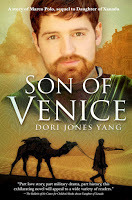 Last year, I wrote up a review of Dori Jones Yang's Daughter of Xanadu, a YA historical novel about the fictional granddaughter of Khubilai Khan and her romance with foreign explorer Marco Polo. The sequel,
Son of Venice,
is out now. My schedule prevents me from participating in the upcoming blog tour, but it should be worth checking out for those interested in out-of-the-ordinary settings or who simply want to read the second half of Emmajin's story.
Last year, I wrote up a review of Dori Jones Yang's Daughter of Xanadu, a YA historical novel about the fictional granddaughter of Khubilai Khan and her romance with foreign explorer Marco Polo. The sequel,
Son of Venice,
is out now. My schedule prevents me from participating in the upcoming blog tour, but it should be worth checking out for those interested in out-of-the-ordinary settings or who simply want to read the second half of Emmajin's story.
RIP, Barry Unsworth (from the NY Times). I had the pleasure of reviewing his The Ruby in the Navel and Land of Marvels for Booklist. Ruby was a quintessential example of why the 50-page rule doesn't always work! It was an assignment (and by a former Booker winner, too), so I had to keep reading, but with pages and pages of semi-dense narrative, I was starting to wonder what the point to it all was... until the narrator's voice and story finally clicked around p.75. My review can be found on Amazon, in the Editorial Reviews section.
Finally, the Historical Novel Society has been publishing a series of essays on the 2012 Walter Scott Prize for historical fiction, which will be awarded this Saturday. Here's the last of eight articles, which predicts the overall winner and links to the assessments of the six shortlisted works.
 Historical fiction shelf extravaganza! Click to enlarge.The books in the photo are a mix of ARCs for the Historical Novels Review (to be assigned and mailed in early July), personal review copies for the blog, recent purchases/trades, and more. I honestly can't recall ever being so overwhelmed with literary goodness, and I haven't even shown you a photo of my desk, which has books piled 2' high around my monitor and 3' high on the floor on either side.
Historical fiction shelf extravaganza! Click to enlarge.The books in the photo are a mix of ARCs for the Historical Novels Review (to be assigned and mailed in early July), personal review copies for the blog, recent purchases/trades, and more. I honestly can't recall ever being so overwhelmed with literary goodness, and I haven't even shown you a photo of my desk, which has books piled 2' high around my monitor and 3' high on the floor on either side. This was the 3rd year of the Book Blogger Con, now renamed the BEA Blogger Conference. Although I attended in 2010 and 2011, I didn't attend this year, and from all I've been reading, this was a wise move. My husband and I met up with my fellow HNR reviews editor Andrea Connell for dinner last Monday night at Rosa Mexicano near Union Square, and she told me about her experience. Read her take on it at The Queen's Quill Review: Part 1 and Part 2: "Critical Reviews" Saved the Day. Sigh. If this is what we'll be seeing now that BEA has taken over the blogger con, I'm more likely to go to the blogger unconference than the sponsored event, if I attend at all.
This was the 3rd year of the Book Blogger Con, now renamed the BEA Blogger Conference. Although I attended in 2010 and 2011, I didn't attend this year, and from all I've been reading, this was a wise move. My husband and I met up with my fellow HNR reviews editor Andrea Connell for dinner last Monday night at Rosa Mexicano near Union Square, and she told me about her experience. Read her take on it at The Queen's Quill Review: Part 1 and Part 2: "Critical Reviews" Saved the Day. Sigh. If this is what we'll be seeing now that BEA has taken over the blogger con, I'm more likely to go to the blogger unconference than the sponsored event, if I attend at all.Moving on from BEA: ALA Annual is coming up in less than two weeks, so I have to get my mind in gear and think once again about hotels, shuttle buses, exhibits, panels, receptions, and my presentation. I'll be speaking on the "Readers' Advisory for Town and Gown: Academic and Public Library Partnerships for RA Services" panel on Monday, June 25th, from 10:30-noon at the Anaheim Convention Center, Room 213D. It got a nice preview in Library Journal. My contribution will cover my university library's popular reading collections, staff development programs I've run on readers' advisory tools, and what it's like to share a collection of OverDrive audiobooks and e-books with a consortium of mostly public libraries.
Also at ALA, on Saturday morning: "Historical Fiction @ Your Library," which takes place from 10:30am-noon; speakers include Regina O'Melveny, Gail Tsukiyama, Jeri Westerson, and Jean Zimmerman, moderated by LJ's Barbara Hoffert. This is the same time as the "Browsing for Pleasure in the Digital Age" readers' advisory forum, which I'd been planning to attend. Too much to do at once; this always happens.
On Monday, Mary Tod of A Writer's Voice interviewed me for her site on the subject of historical fiction reviewing, genre trends, why people blog about historical novels, advice for writers on marketing, and lots more. I went on at great length in response to some of her questions, so jump on over to the site if you're curious! The interview forms part of an interview series that Mary's conducting with bloggers and authors as a followup to her spring historical fiction survey, which garnered over 800 responses.
 Last year, I wrote up a review of Dori Jones Yang's Daughter of Xanadu, a YA historical novel about the fictional granddaughter of Khubilai Khan and her romance with foreign explorer Marco Polo. The sequel,
Son of Venice,
is out now. My schedule prevents me from participating in the upcoming blog tour, but it should be worth checking out for those interested in out-of-the-ordinary settings or who simply want to read the second half of Emmajin's story.
Last year, I wrote up a review of Dori Jones Yang's Daughter of Xanadu, a YA historical novel about the fictional granddaughter of Khubilai Khan and her romance with foreign explorer Marco Polo. The sequel,
Son of Venice,
is out now. My schedule prevents me from participating in the upcoming blog tour, but it should be worth checking out for those interested in out-of-the-ordinary settings or who simply want to read the second half of Emmajin's story.RIP, Barry Unsworth (from the NY Times). I had the pleasure of reviewing his The Ruby in the Navel and Land of Marvels for Booklist. Ruby was a quintessential example of why the 50-page rule doesn't always work! It was an assignment (and by a former Booker winner, too), so I had to keep reading, but with pages and pages of semi-dense narrative, I was starting to wonder what the point to it all was... until the narrator's voice and story finally clicked around p.75. My review can be found on Amazon, in the Editorial Reviews section.
Finally, the Historical Novel Society has been publishing a series of essays on the 2012 Walter Scott Prize for historical fiction, which will be awarded this Saturday. Here's the last of eight articles, which predicts the overall winner and links to the assessments of the six shortlisted works.
Published on June 12, 2012 18:39
June 11, 2012
Guest post from Kristin Gleeson, author of Selkie Dreams: The Selkie Myth
For today's post, Kristin Gleeson has contributed an essay about the backdrop to her newly published novel Selkie Dreams (Knox Robinson, June), which mingles 19th-century Irish history, Celtic folklore and mythology, and the story of the Tlingit people of Alaska. The book trailer at the end features the author playing the harp, while a friend contributed the vocals.
~
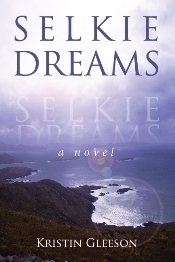 The Selkie. The name conjures up romantic images, even if you’re not quite sure what they are--seals that come ashore and take on human form at midsummer’s eve. You can almost believe it when you look at their baleful eyes with their long lashes that look so human. And their mournful cries that convey such sadness. Is it a myth? Some people, especially in times past, would have said, ‘not so.’
The Selkie. The name conjures up romantic images, even if you’re not quite sure what they are--seals that come ashore and take on human form at midsummer’s eve. You can almost believe it when you look at their baleful eyes with their long lashes that look so human. And their mournful cries that convey such sadness. Is it a myth? Some people, especially in times past, would have said, ‘not so.’
The myths of the selkie are usually found among people who inhabit the coastal waters of Scotland, Ireland and even far flung areas where the Saami (Laplanders) and the Inuit live. One of the theories used to explain their existence is that selkies are the souls of dead fishermen and other people lost at sea. Another theory is that they are fallen angels, doomed to live out their days as animals until judgement comes; or that they are humans forced to take animal form for some grave misdemeanour.
The various myths that feature selkies show them as either men or women who come ashore either Midsummer’s Eve, “every ninth night,” or “every seventh stream.” I use both types of selkies in my novel, Selkie Dreams. A myth of a woman selkie tells of a fisherman who spies a selkie woman on the shore and compels her to go with him after he steals and hides her seal skin. She bears him a child, but eventually she finds her seal skin and she returns to the sea, leaving her child behind with the promise she will come when the child calls.
“Yer mam left but she had no choice, so,” Cook would tell me as she watched Polly, the kitchen maid, chop the vegetables, or Annie the house maid collect the tea tray. “She went back to the sea, back to her seal folk. They live ashore for a brief spell, following human ways, until after a while the pull from the sea comes over them, strong and forceful like. It’s their true folk, the selkies, who call them home, so it is.” Excerpt from Selkie Dreams.
 A male selkie myth is also a running theme in my novel and comes from the song The Silkie of Sule Skerrie, the song that frames the novel. It tells the story of a selkie man who comes ashore and seeks out a lonely woman. After spending only one night together the man departs and the woman spends her days searching the shoreline awaiting his return. Eventually, after she gives birth to a son, the man appears and gives her a gold chain for the son. Years later, when the son is seven years old, the selkie comes again to claim him. Though she mourns her son and lover, she marries a hunter who, not long after their marriage, shoots two seals, one with a gold chain around its neck.
A male selkie myth is also a running theme in my novel and comes from the song The Silkie of Sule Skerrie, the song that frames the novel. It tells the story of a selkie man who comes ashore and seeks out a lonely woman. After spending only one night together the man departs and the woman spends her days searching the shoreline awaiting his return. Eventually, after she gives birth to a son, the man appears and gives her a gold chain for the son. Years later, when the son is seven years old, the selkie comes again to claim him. Though she mourns her son and lover, she marries a hunter who, not long after their marriage, shoots two seals, one with a gold chain around its neck.
With all the many versions of the myth, each contains the unmistakable theme of transformation and the idea of humanity’s unbreakable link with the sea. That idea underpins the novel as well as the song.
It wasn’t just the song and the myth that influenced the novel. Though it starts out in Ireland, in the north, the main character, Máire travels to Alaska, another place that seals inhabit, to teach the Tlingit. I was inspired to select that area and the Tlingit to set the novel from my work with the Tlingit when I was an administrator at an historical society. A Tlingit elder phoned me and asked for help trying to prove that Tlingits inhabited a section of land in Alaska when the U.S. government appropriated it for their own uses in the late nineteenth and early twentieth century. He also wanted information about some of the land assigned to Presbyterian missions that had fallen into disuse. It seemed incredible since the archives contained so many reports and letters from that area stating the contrary.
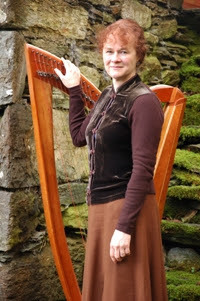 Author Kristin GleesonWhile I worked to assist the Tlingit elder and his clan, I learned much about the Tlingit view of the effects of settlement and missionary efforts and realized how much that view was lacking from books and official records. I was fascinated. Some of it was heartbreaking. Children were often ripped from their families and sent off to boarding schools. When the children returned to their families sometimes they couldn’t even communicate with their families because they forgot the language. It was clear that the missionaries, though often well intentioned, were driven by the idea that they were the superior culture and race and treated the native people for the most part as barbarians in need of civilizing. I’m not saying the Tlingits were peace-loving angels, but their culture at that time period I felt need to be seen in context. What better way than through a novel? And like my main character, Máire, the Tlingit have myths that influenced their lives and how they saw the world, it seemed a good match. Then add American mission views and racial myths and there is much to make for an exciting story.
Author Kristin GleesonWhile I worked to assist the Tlingit elder and his clan, I learned much about the Tlingit view of the effects of settlement and missionary efforts and realized how much that view was lacking from books and official records. I was fascinated. Some of it was heartbreaking. Children were often ripped from their families and sent off to boarding schools. When the children returned to their families sometimes they couldn’t even communicate with their families because they forgot the language. It was clear that the missionaries, though often well intentioned, were driven by the idea that they were the superior culture and race and treated the native people for the most part as barbarians in need of civilizing. I’m not saying the Tlingits were peace-loving angels, but their culture at that time period I felt need to be seen in context. What better way than through a novel? And like my main character, Máire, the Tlingit have myths that influenced their lives and how they saw the world, it seemed a good match. Then add American mission views and racial myths and there is much to make for an exciting story.
Selkie Dreams was published June 7, 2012, by Knox Robinson Publishing in hardback (386pp, $23.99/£19.99) and ebook and is also available from Amazon US and Amazon UK, Book Depository and the publisher’s website.

~
 The Selkie. The name conjures up romantic images, even if you’re not quite sure what they are--seals that come ashore and take on human form at midsummer’s eve. You can almost believe it when you look at their baleful eyes with their long lashes that look so human. And their mournful cries that convey such sadness. Is it a myth? Some people, especially in times past, would have said, ‘not so.’
The Selkie. The name conjures up romantic images, even if you’re not quite sure what they are--seals that come ashore and take on human form at midsummer’s eve. You can almost believe it when you look at their baleful eyes with their long lashes that look so human. And their mournful cries that convey such sadness. Is it a myth? Some people, especially in times past, would have said, ‘not so.’ The myths of the selkie are usually found among people who inhabit the coastal waters of Scotland, Ireland and even far flung areas where the Saami (Laplanders) and the Inuit live. One of the theories used to explain their existence is that selkies are the souls of dead fishermen and other people lost at sea. Another theory is that they are fallen angels, doomed to live out their days as animals until judgement comes; or that they are humans forced to take animal form for some grave misdemeanour.
The various myths that feature selkies show them as either men or women who come ashore either Midsummer’s Eve, “every ninth night,” or “every seventh stream.” I use both types of selkies in my novel, Selkie Dreams. A myth of a woman selkie tells of a fisherman who spies a selkie woman on the shore and compels her to go with him after he steals and hides her seal skin. She bears him a child, but eventually she finds her seal skin and she returns to the sea, leaving her child behind with the promise she will come when the child calls.
“Yer mam left but she had no choice, so,” Cook would tell me as she watched Polly, the kitchen maid, chop the vegetables, or Annie the house maid collect the tea tray. “She went back to the sea, back to her seal folk. They live ashore for a brief spell, following human ways, until after a while the pull from the sea comes over them, strong and forceful like. It’s their true folk, the selkies, who call them home, so it is.” Excerpt from Selkie Dreams.
 A male selkie myth is also a running theme in my novel and comes from the song The Silkie of Sule Skerrie, the song that frames the novel. It tells the story of a selkie man who comes ashore and seeks out a lonely woman. After spending only one night together the man departs and the woman spends her days searching the shoreline awaiting his return. Eventually, after she gives birth to a son, the man appears and gives her a gold chain for the son. Years later, when the son is seven years old, the selkie comes again to claim him. Though she mourns her son and lover, she marries a hunter who, not long after their marriage, shoots two seals, one with a gold chain around its neck.
A male selkie myth is also a running theme in my novel and comes from the song The Silkie of Sule Skerrie, the song that frames the novel. It tells the story of a selkie man who comes ashore and seeks out a lonely woman. After spending only one night together the man departs and the woman spends her days searching the shoreline awaiting his return. Eventually, after she gives birth to a son, the man appears and gives her a gold chain for the son. Years later, when the son is seven years old, the selkie comes again to claim him. Though she mourns her son and lover, she marries a hunter who, not long after their marriage, shoots two seals, one with a gold chain around its neck. With all the many versions of the myth, each contains the unmistakable theme of transformation and the idea of humanity’s unbreakable link with the sea. That idea underpins the novel as well as the song.
It wasn’t just the song and the myth that influenced the novel. Though it starts out in Ireland, in the north, the main character, Máire travels to Alaska, another place that seals inhabit, to teach the Tlingit. I was inspired to select that area and the Tlingit to set the novel from my work with the Tlingit when I was an administrator at an historical society. A Tlingit elder phoned me and asked for help trying to prove that Tlingits inhabited a section of land in Alaska when the U.S. government appropriated it for their own uses in the late nineteenth and early twentieth century. He also wanted information about some of the land assigned to Presbyterian missions that had fallen into disuse. It seemed incredible since the archives contained so many reports and letters from that area stating the contrary.
 Author Kristin GleesonWhile I worked to assist the Tlingit elder and his clan, I learned much about the Tlingit view of the effects of settlement and missionary efforts and realized how much that view was lacking from books and official records. I was fascinated. Some of it was heartbreaking. Children were often ripped from their families and sent off to boarding schools. When the children returned to their families sometimes they couldn’t even communicate with their families because they forgot the language. It was clear that the missionaries, though often well intentioned, were driven by the idea that they were the superior culture and race and treated the native people for the most part as barbarians in need of civilizing. I’m not saying the Tlingits were peace-loving angels, but their culture at that time period I felt need to be seen in context. What better way than through a novel? And like my main character, Máire, the Tlingit have myths that influenced their lives and how they saw the world, it seemed a good match. Then add American mission views and racial myths and there is much to make for an exciting story.
Author Kristin GleesonWhile I worked to assist the Tlingit elder and his clan, I learned much about the Tlingit view of the effects of settlement and missionary efforts and realized how much that view was lacking from books and official records. I was fascinated. Some of it was heartbreaking. Children were often ripped from their families and sent off to boarding schools. When the children returned to their families sometimes they couldn’t even communicate with their families because they forgot the language. It was clear that the missionaries, though often well intentioned, were driven by the idea that they were the superior culture and race and treated the native people for the most part as barbarians in need of civilizing. I’m not saying the Tlingits were peace-loving angels, but their culture at that time period I felt need to be seen in context. What better way than through a novel? And like my main character, Máire, the Tlingit have myths that influenced their lives and how they saw the world, it seemed a good match. Then add American mission views and racial myths and there is much to make for an exciting story. Selkie Dreams was published June 7, 2012, by Knox Robinson Publishing in hardback (386pp, $23.99/£19.99) and ebook and is also available from Amazon US and Amazon UK, Book Depository and the publisher’s website.
Published on June 11, 2012 04:00
June 2, 2012
Guest post from Kate Lord Brown: Where do stories come from?
Today Kate Lord Brown is making a return visit to the blog to talk about her newly released novel, The Perfume Garden. Historical Tapestry and A Fantastical Librarian have just weighed in with their strong recommendations on the book; my own copy is en route!
~
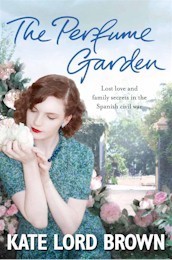 Where do stories come from? With historical fiction, perhaps it seems more obvious – an event in the past, or a remarkable real-life character is often the spark for a fictional tale. The Perfume Garden interweaves a contemporary story with the Spanish Civil War, and there are certainly plenty of real events, and battles, and incredible individuals like the war photographers Robert Capa and Gerda Taro, and writers like Hemingway and Gellhorn. The inspiration for this story lies closer to home, though.
Where do stories come from? With historical fiction, perhaps it seems more obvious – an event in the past, or a remarkable real-life character is often the spark for a fictional tale. The Perfume Garden interweaves a contemporary story with the Spanish Civil War, and there are certainly plenty of real events, and battles, and incredible individuals like the war photographers Robert Capa and Gerda Taro, and writers like Hemingway and Gellhorn. The inspiration for this story lies closer to home, though.
I grew up in a remote, wild part of the UK, between Exmoor and Dartmoor in the south-west of the country. Our closest neighbours were a glamorous couple, who were renting an old farmhouse. She had been a costume designer for Fellini, and he did something vague that involved lots of phone calls to Brazil. They were flamboyant, and charming, poured lethal Gin and Tonics, and told wonderful tales about how they had met in Paris. One night I overheard my father tell my mother that the husband had fought in the Spanish Civil War – on the Nationalist side.
 author Kate Lord BrownThat stayed with me – the thought that someone you knew, and had liked, could have fought for the side that overthrew a democratically elected government, confused me. Were all Nationalists fascists? Were all Republicans communists? Over the years, I started reading about the war, and when I studied photography at university, I learnt about Capa, and Taro, and their remarkable work in Spain. When my husband and I ended up living in the orange groves of Valencia for three years, I found that even the younger generation quickly changed the subject if you asked them about the war. I was curious, and ten years ago started to research and write this story of a family, of a beautiful country torn apart by conflict. I hope it’s a tribute to the remarkable sacrifices ordinary people make for freedom, and the ones they love.
author Kate Lord BrownThat stayed with me – the thought that someone you knew, and had liked, could have fought for the side that overthrew a democratically elected government, confused me. Were all Nationalists fascists? Were all Republicans communists? Over the years, I started reading about the war, and when I studied photography at university, I learnt about Capa, and Taro, and their remarkable work in Spain. When my husband and I ended up living in the orange groves of Valencia for three years, I found that even the younger generation quickly changed the subject if you asked them about the war. I was curious, and ten years ago started to research and write this story of a family, of a beautiful country torn apart by conflict. I hope it’s a tribute to the remarkable sacrifices ordinary people make for freedom, and the ones they love.
The Perfume Gardenby Kate Lord Brown (see on Amazon UK and Goodreads) is published by Atlantic on June 1st, 2012. Visit the author's blog at http://perfumegarden.blogspot.com and her website, www.katelordbrown.com, as well as the novel's book trailer, below.

~
 Where do stories come from? With historical fiction, perhaps it seems more obvious – an event in the past, or a remarkable real-life character is often the spark for a fictional tale. The Perfume Garden interweaves a contemporary story with the Spanish Civil War, and there are certainly plenty of real events, and battles, and incredible individuals like the war photographers Robert Capa and Gerda Taro, and writers like Hemingway and Gellhorn. The inspiration for this story lies closer to home, though.
Where do stories come from? With historical fiction, perhaps it seems more obvious – an event in the past, or a remarkable real-life character is often the spark for a fictional tale. The Perfume Garden interweaves a contemporary story with the Spanish Civil War, and there are certainly plenty of real events, and battles, and incredible individuals like the war photographers Robert Capa and Gerda Taro, and writers like Hemingway and Gellhorn. The inspiration for this story lies closer to home, though.I grew up in a remote, wild part of the UK, between Exmoor and Dartmoor in the south-west of the country. Our closest neighbours were a glamorous couple, who were renting an old farmhouse. She had been a costume designer for Fellini, and he did something vague that involved lots of phone calls to Brazil. They were flamboyant, and charming, poured lethal Gin and Tonics, and told wonderful tales about how they had met in Paris. One night I overheard my father tell my mother that the husband had fought in the Spanish Civil War – on the Nationalist side.
 author Kate Lord BrownThat stayed with me – the thought that someone you knew, and had liked, could have fought for the side that overthrew a democratically elected government, confused me. Were all Nationalists fascists? Were all Republicans communists? Over the years, I started reading about the war, and when I studied photography at university, I learnt about Capa, and Taro, and their remarkable work in Spain. When my husband and I ended up living in the orange groves of Valencia for three years, I found that even the younger generation quickly changed the subject if you asked them about the war. I was curious, and ten years ago started to research and write this story of a family, of a beautiful country torn apart by conflict. I hope it’s a tribute to the remarkable sacrifices ordinary people make for freedom, and the ones they love.
author Kate Lord BrownThat stayed with me – the thought that someone you knew, and had liked, could have fought for the side that overthrew a democratically elected government, confused me. Were all Nationalists fascists? Were all Republicans communists? Over the years, I started reading about the war, and when I studied photography at university, I learnt about Capa, and Taro, and their remarkable work in Spain. When my husband and I ended up living in the orange groves of Valencia for three years, I found that even the younger generation quickly changed the subject if you asked them about the war. I was curious, and ten years ago started to research and write this story of a family, of a beautiful country torn apart by conflict. I hope it’s a tribute to the remarkable sacrifices ordinary people make for freedom, and the ones they love. The Perfume Gardenby Kate Lord Brown (see on Amazon UK and Goodreads) is published by Atlantic on June 1st, 2012. Visit the author's blog at http://perfumegarden.blogspot.com and her website, www.katelordbrown.com, as well as the novel's book trailer, below.
Published on June 02, 2012 19:44
May 30, 2012
Book review: Letter from a Stranger, by Barbara Taylor Bradford
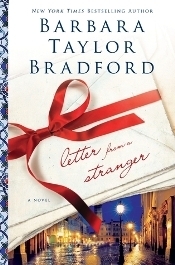 To read Barbara Taylor Bradford's Letter from a Stranger is to enter a world slightly elevated from the one most of us know. Her stunningly attractive characters sit at the top of their careers; their wealth lets them live in large, impeccably designed homes; their devoted servants mother them with affection and whip up their favorite meals at a moment's notice. They fall in love at an instant with a passionate coup de foudre. They also own property in gorgeous locales, in this case Connecticut's peaceful Litchfield Hills and historic, exotic Istanbul.
To read Barbara Taylor Bradford's Letter from a Stranger is to enter a world slightly elevated from the one most of us know. Her stunningly attractive characters sit at the top of their careers; their wealth lets them live in large, impeccably designed homes; their devoted servants mother them with affection and whip up their favorite meals at a moment's notice. They fall in love at an instant with a passionate coup de foudre. They also own property in gorgeous locales, in this case Connecticut's peaceful Litchfield Hills and historic, exotic Istanbul.Despite the many plot contrivances and the fact that so much seems to just click into place for these people, this last aspect is sufficient reason to read Bradford's dual-period novel, which is an enticing advertisement for visiting the multi-ethnic city on the Bosphorus.
In 2004, Justine Nolan, an Emmy-winning documentary filmmaker, gets the shock of her life when she opens a letter indicating that her beloved grandmother, Gabriele, is still alive. Ten years earlier, Justine's mother, Deborah, had told her and her twin brother Richard that their Gran had been killed in a plane crash. They were devastated (yet apparently didn't question it further, seek out news clippings, etc).
The mysterious letter has no return address. Its postmark propels Justine on a searching journey to Istanbul, where Gabriele had once run a successful import-export business. There, in a picture-perfect pink yali (villa) on the Asian side of the ancient river, Justine discovers more than she bargained for: not only the reasons for her mother's cruel estrangement from Gabriele, but the tragic past that Gabriele had kept hidden for sixty years. She also finds love.
Less than a quarter of the novel takes place in historic times, and these segments are fragmented and choppily written by design, but they sit at the story's center. Gabri's secrets aren't that hard to guess, and they explain, as Justine learns, why she always sought to surround herself with beautiful things. Istanbul is the star here, and the descriptions of its historic Byzantine architecture, local cuisine (the cheese-and-herb-filled pastry triangles known as börek ), luxurious gardens, and scenes of the river at nightfall make for a refreshing, almost intoxicating experience:
"How beautiful the Bosphorus looked at this hour. The sun was setting and the deep blue waters of the straits rippled with rafts of crimson, pink, and gold, and the sky was aflame along the rim of the far horizon."
The characters have a tendency to over-dramatize, and they themselves remark on the coincidental flukes that seem to happen in their privileged lives – almost as many times as they call Deborah a flake. Even her two children believe that Deborah, who fortunately remains absent for most of the novel, is a nasty piece of work; it seems impossible that she could get any worse, but somehow she does. Yet the underlying story carries a power of its own, gliding readers along smoothly until the obligatory happy ending. Bring it to the beach, or read it in the garden under the summer sun.
Letter from a Stranger was published by St. Martin's Press in March at $27.99 / $31.99 Can (hardcover, 422pp). In the UK, it's out in paperback from Harper at £7.99.
Published on May 30, 2012 08:00
May 29, 2012
Guest post from Paula Paul, author of Sins of the Empress
Today I'm welcoming novelist Paula Paul to the blog. Her new novel Sins of the Empress (Cool Well Press, April, $12.99) is biographical fiction about Catherine II of Russia, who of course is best known as Catherine the Great. Paula Paul is no stranger to historical fiction; she has also written three mysteries about a female doctor in Victorian times, Dr. Alexandra Gladstone, as well as two biographical novels about saints which were written under the name Catherine Monroe: The Barefoot Girl, set in 14th-century Italy, and The King's Nun, a novel of Charlemagne's court. Her post about getting absorbed by the details in historical novels is one that I believe will ring true for many readers as well as other novelists. For more information on Paula and her works, see her website at http://www.paulapaul.net.
~
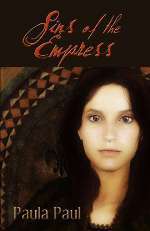 Writing, to me, is an exercise in total immersion. That’s true whether I’m writing a non-fiction article for a newspaper or magazine or a novel. I become completely involved with the subject, researching even the smallest details. I end up with more information than is reasonable to put in an article or book.
Writing, to me, is an exercise in total immersion. That’s true whether I’m writing a non-fiction article for a newspaper or magazine or a novel. I become completely involved with the subject, researching even the smallest details. I end up with more information than is reasonable to put in an article or book.
That was certainly the case when I wrote Sins of the Empress, an historical novel about Catherine the Great of Russia. I read so many books and Internet articles about her that I lost count. I also read her memoir—regrettably, she never finished it. I read books that she read, including Montesquieu’s The Spirit of the Laws, which was rough going even though I read a 1989 English translation. I do read a little French, but I certainly don’t read it well enough to have tackled the eighteenth-century French version.
I also reread some of Voltaire’s works since Catherine was fond of him and his writings, at least until very late in her life when she considered him too liberal. I took the easy way out and read them in English in spite of the fact that I have some of his works in French collecting dust in my book shelves. Apologies to my French professors for that, but my college days were a long time back, and I’ve lost proficiency since then.
I read books about her lovers and associates. I garnered information about food and clothing styles in eighteenth-century Russia. I dug up information about the Russian Orthodox Church and learned some of the liturgy. As is usually the case when I’m writing a novel, I became so entangled in the life and era of my characters that when I was forced to bring myself back to twenty-first-century America, it seemed foreign to me.
Now I’m wondering if some of the things I had to leave out for the sake of keeping the momentum of the story couldn’t have been worked in somehow. That’s because everything about her life was infinitely interesting to me.
Besides having a fascinating life, Catherine was a highly intelligent and immensely passionate woman—passionate, not just in her love life, but in everything she did.
She was a German princess from a minor principality when her marriage to the heir to the Russian throne was arranged by the reigning Empress Elizabeth. Oddly enough, even though she was chosen as the bride of a future tsar, she was not well treated at court, so she kept to herself at first, and applied herself tirelessly to learning the Russian language as well as the geography and history of the country. It made me tired just to read about the long, long hours she spent at her lessons.
Her husband, Peter III, was cruel and mentally challenged. Since he’d been an alcoholic beginning at age eleven, perhaps his brain was damaged. There is no doubt he was damaged in other ways since he was not able to father a child and, for awhile at least, didn’t understand how the sex act was accomplished.
Never mind his mental and physical condition, it was Catherine who was blamed for not producing a future heir. She found a way to remedy that by taking lovers. She did have children—two boys and a girl. Tragically, they were taken from her by Empress Elizabeth soon after birth. Catherine had to risk her life to see them.
The true story of her tragedies, her lovers, the murder of Peter (Did Catherine kill him?), the death of Elizabeth, and Catherine’s determination to seize the throne and rule Russia is what made up the multilayered plot of Sins of the Empress. It is a story that consumed me as I wrote it, and in some ways still does.
My hope is that others will immerse themselves in the story and allow it to consume them also.
~
 About the Author:
About the Author:
Paula Paul is the award-winning author of 25 novels for both children and adults. She also had a career as a newspaper journalist and has won several state and national awards in that field. A native Texan, she grew up on a cotton farm/ranch in Bailey County, a county named for her ancestor who died at the Alamo. She loves playing the piano and learning how to or about just about anything. Oh, and big family get-togethers with her two children and their families. She lives in Albuquerque, New Mexico, with her husband.

~
 Writing, to me, is an exercise in total immersion. That’s true whether I’m writing a non-fiction article for a newspaper or magazine or a novel. I become completely involved with the subject, researching even the smallest details. I end up with more information than is reasonable to put in an article or book.
Writing, to me, is an exercise in total immersion. That’s true whether I’m writing a non-fiction article for a newspaper or magazine or a novel. I become completely involved with the subject, researching even the smallest details. I end up with more information than is reasonable to put in an article or book.That was certainly the case when I wrote Sins of the Empress, an historical novel about Catherine the Great of Russia. I read so many books and Internet articles about her that I lost count. I also read her memoir—regrettably, she never finished it. I read books that she read, including Montesquieu’s The Spirit of the Laws, which was rough going even though I read a 1989 English translation. I do read a little French, but I certainly don’t read it well enough to have tackled the eighteenth-century French version.
I also reread some of Voltaire’s works since Catherine was fond of him and his writings, at least until very late in her life when she considered him too liberal. I took the easy way out and read them in English in spite of the fact that I have some of his works in French collecting dust in my book shelves. Apologies to my French professors for that, but my college days were a long time back, and I’ve lost proficiency since then.
I read books about her lovers and associates. I garnered information about food and clothing styles in eighteenth-century Russia. I dug up information about the Russian Orthodox Church and learned some of the liturgy. As is usually the case when I’m writing a novel, I became so entangled in the life and era of my characters that when I was forced to bring myself back to twenty-first-century America, it seemed foreign to me.
Now I’m wondering if some of the things I had to leave out for the sake of keeping the momentum of the story couldn’t have been worked in somehow. That’s because everything about her life was infinitely interesting to me.
Besides having a fascinating life, Catherine was a highly intelligent and immensely passionate woman—passionate, not just in her love life, but in everything she did.
She was a German princess from a minor principality when her marriage to the heir to the Russian throne was arranged by the reigning Empress Elizabeth. Oddly enough, even though she was chosen as the bride of a future tsar, she was not well treated at court, so she kept to herself at first, and applied herself tirelessly to learning the Russian language as well as the geography and history of the country. It made me tired just to read about the long, long hours she spent at her lessons.
Her husband, Peter III, was cruel and mentally challenged. Since he’d been an alcoholic beginning at age eleven, perhaps his brain was damaged. There is no doubt he was damaged in other ways since he was not able to father a child and, for awhile at least, didn’t understand how the sex act was accomplished.
Never mind his mental and physical condition, it was Catherine who was blamed for not producing a future heir. She found a way to remedy that by taking lovers. She did have children—two boys and a girl. Tragically, they were taken from her by Empress Elizabeth soon after birth. Catherine had to risk her life to see them.
The true story of her tragedies, her lovers, the murder of Peter (Did Catherine kill him?), the death of Elizabeth, and Catherine’s determination to seize the throne and rule Russia is what made up the multilayered plot of Sins of the Empress. It is a story that consumed me as I wrote it, and in some ways still does.
My hope is that others will immerse themselves in the story and allow it to consume them also.
~
 About the Author:
About the Author: Paula Paul is the award-winning author of 25 novels for both children and adults. She also had a career as a newspaper journalist and has won several state and national awards in that field. A native Texan, she grew up on a cotton farm/ranch in Bailey County, a county named for her ancestor who died at the Alamo. She loves playing the piano and learning how to or about just about anything. Oh, and big family get-togethers with her two children and their families. She lives in Albuquerque, New Mexico, with her husband.
Published on May 29, 2012 05:00
May 25, 2012
An interview with Kate Forsyth, author of Bitter Greens
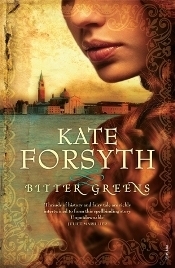 Kate Forsyth's deeply engrossing Bitter Greens carefully interweaves the stories of three women and their searches for power, freedom, and love across the span of two centuries.
Kate Forsyth's deeply engrossing Bitter Greens carefully interweaves the stories of three women and their searches for power, freedom, and love across the span of two centuries.At its center is Margherita, a girl in late 16th-century Venice, whose loving parents must fulfill a terrible bargain by giving her up to the red-haired sorceress known as La Strega Bella (the beautiful witch). Shut away in a distant tower with no means of escape, Margherita grows to womanhood alone. Her isolation is broken only by monthly visits from the witch, who announces her presence by calling for Margherita to let down her long hair.
A century later, Charlotte-Rose de la Force, a distant relative of the Sun King, learns about Margherita from an elderly nun. Outspoken and bold, Charlotte-Rose has been expelled from Versailles for her impious writings and rumors of romantic scandal and banished to a strict Benedictine abbey.
Intertwining with their tales, a third woman speaks about her life of passion, art, and black magic in early 1500s Venice. Selena Leonelli wasn't always a witch; she was born a whore's daughter, and she became the favored mistress of the Italian painter Tiziano. Her pursuit of eternal beauty comes at a price, though, and it's one that Margherita and her parents must pay.
While Kate Forsyth's take on the Rapunzel fairytale uses authentic history as a backdrop, her parallel story about the historical Charlotte-Rose — the author of one of the first Rapunzel retellings — is threaded with sinister enchantments. But despite the dark themes (this isn't a children's story!) the plot moves along with a light touch. Sweeping from the artistic extravagance of Renaissance Italy to the opulent, backbiting court of France's Louis XIV to the morbid discoveries made by Margherita in her tower overlooking Italy's Lake Garda, Bitter Greens is a rich, imaginative feat.
Kate is an Australian writer best known for her fantasy novels for adults and children; her work has always been inspired by history, although this is her first adult mainstream historical. I'd like to thank her for responding to my questions in such detail!
Each section of the novel begins with a quote from a different writer's interpretation of the Rapunzel tale. In addition to Charlotte-Rose de la Force's version, do you have any other favorite retellings, or ones that gave you special insight into how to proceed with your own?
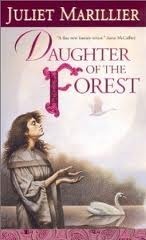 I loved all those Rapunzel poems! In a way, Rapunzel has inspired more poetry than she has novels. My favourite retelling of the tale has to be The Stone Cage by Nicholas Stuart Grey who is one of my all-time most beloved classic children’s authors. I also love The Glass Slipper by Eleanor Farjeon – I read both of these books at the age of 11 or 12, and they inspired my lifelong love of fairytale retellings. Fewer people write fairytale retellings books for adults - my favourites are Daughter of the Forest by Juliet Marillier – in fact, any book by Juliet Marillier – and Till We Have Faces by C.S. Lewis, a retelling of the Cupid and Psyche story.
I loved all those Rapunzel poems! In a way, Rapunzel has inspired more poetry than she has novels. My favourite retelling of the tale has to be The Stone Cage by Nicholas Stuart Grey who is one of my all-time most beloved classic children’s authors. I also love The Glass Slipper by Eleanor Farjeon – I read both of these books at the age of 11 or 12, and they inspired my lifelong love of fairytale retellings. Fewer people write fairytale retellings books for adults - my favourites are Daughter of the Forest by Juliet Marillier – in fact, any book by Juliet Marillier – and Till We Have Faces by C.S. Lewis, a retelling of the Cupid and Psyche story. The opening scene in which Charlotte-Rose is forced to leave Versailles and banished to the abbey at Gercy-en-Brie reminded me of Sarah Dunant's wonderful Sacred Hearts, in which a young Italian woman rails against being imprisoned in a nunnery against her will. (I'd be curious if you've read it!) In both your novel and hers, I was left with the strong impression of how few choices women had back then, in Europe of the 16th and 17th centuries. Why did you decide to make this a theme of your work?
I love Sarah Dunant’s books! Sacred Hearts came out when I was already well into the writing of Bitter Greens, and helped lay to rest some of my worry that you couldn’t write a book full of suspense and mystery when the key characters are locked away from the world, whether enclosed in a convent or imprisoned in a tower. I also re-read her novel set in Venice, In the Company of the Courtesan, which is another favourite of mine. I think it is indeed true that both my work and Sarah Dunant’s work highlights how few choices women had in the 16th & 17th centuries, but then I also think it is impossible to write a novel set in that period and not grapple with this issue. Women were truly powerless in a way that we find difficult to comprehend now. In 17th century France, a woman who gave away one of her brooches to thank a maid could be imprisoned with theft if her husband disapproved, since women were not permitted to own property of any kind, and were legally owned by the men in their lives, first their fathers and then their husbands. So you see, it was not that I decided to make this an issue, it was more a matter of being true to the times. One of the amazing things about Charlotte-Rose de la Force and her peers is that were in their own way proto-feminists, wishing for freedom and legal rights, but cruelly constrained by the world in which they lived. Writing stories and holding literary salons was the only way in which they could rebel.
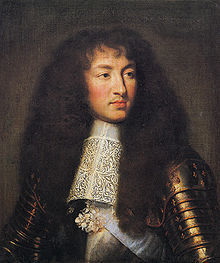 Louis XIV by LeBrun (1661)The tone of Bitter Greens is deliciously creepy and dark, keeping to the roots of the original fairy tale. I loved how you even worked black magic into Charlotte-Rose's fact-based story, with her involvement with the Affaire des Poisons at the Sun King's court. What about this gothic atmosphere appeals to you?
Louis XIV by LeBrun (1661)The tone of Bitter Greens is deliciously creepy and dark, keeping to the roots of the original fairy tale. I loved how you even worked black magic into Charlotte-Rose's fact-based story, with her involvement with the Affaire des Poisons at the Sun King's court. What about this gothic atmosphere appeals to you? My very first journal entry for Bitter Greens was written almost exactly seven years before it was published. I wrote ‘I’m very keen to write a Rapunzel novel – a dark, gothic retelling of a dark, gothic tale.’ From the very beginning, I knew I wanted to return to the story the charge that had been taken from it as it was reframed as a story for children, rather than one for adults. The original story has a lot of terror and cruelty in it – the father who will be maimed for stealing if he does not give up his newborn child, the sorceress who locks her away in a tower in the depths of a wild wood, the climbing of the hair (which must have hurt terribly), the heroine giving birth to twins all by herself in the wilderness, and, of course, the blinding of the prince by thorns. I believe passionately that you need darkness in stories in order to make the brightness more radiant. Rapunzel is a story about a girl who survives a terrible form of abuse, and who redeems all those about her with her great capacity for love and forgiveness. To me, this darkness was the key to the story, and so one I felt strongly needed to be explored.
I also felt that the story had to be written as if it was true, as if it had really happened, so that the distancing effect of far, far away and long, long ago could be dismantled. This is why I chose to write it as a historical novel, rather than a fantasy. I decided to try and find the first version of Rapunzel, which led me to stumble upon the extraordinary story of Charlotte-Rose de la Force, the 17th century French writer who wrote the tale that we best know. It took me years to track down her life story, and many of it is very brief, without much detail. For example, I knew that Charlotte-Rose ‘had come to the attention of the king’ during the infamous Affaire des Poisons, and also that court gossip accused her of trying to seduce the Marquis de Nesle with black magic (I discovered the anecdote about the silken bag containing toads’ legs in the letters of Liselotte, the Princess of Palatine) – this was simply too good a story not to use! In general, many of the key scenes in Charlotte-Rose’s life are based on true-life accounts of her life – for example, the nightcap left in her room by the actor Michel Baron. I used these anecdotes as pegs around which I wove my fancy.
I cannot tell you why I like such stories. I’ve always been drawn to the magical and the strange and the wondrous, and history is full of such tales.
Your depiction of Louis XIV shows him as self-centered, oversexed, contemptuous, and cruel; he's a larger-than-life figure in many ways, but while his court and mode of dress are ornate and glamorous, his character isn't glamorized at all. How did your depiction of him come about?
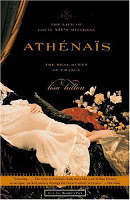 I read every single book I could find about Louis XIV and his court and his mistresses. There was such a wealth of material! The best books were Love & Louis XIV: The Women in the Life of the Sun King by Antonia Fraser, Athenais: The Life of Louis XIV’s Mistress by Lisa Hilton, The Splendid Century: Life in the France of Louis XIV by W.H. Lewis, and The Affair of the Poisons: Murder, Infanticide and Satanism at the Court of Louis XIV by Anne Somerset. They were very illuminating about the court of the Sun King, and what it must’ve been like to live there as a young woman. I think Charlotte-Rose was pleased she wasn’t pretty!
I read every single book I could find about Louis XIV and his court and his mistresses. There was such a wealth of material! The best books were Love & Louis XIV: The Women in the Life of the Sun King by Antonia Fraser, Athenais: The Life of Louis XIV’s Mistress by Lisa Hilton, The Splendid Century: Life in the France of Louis XIV by W.H. Lewis, and The Affair of the Poisons: Murder, Infanticide and Satanism at the Court of Louis XIV by Anne Somerset. They were very illuminating about the court of the Sun King, and what it must’ve been like to live there as a young woman. I think Charlotte-Rose was pleased she wasn’t pretty! The Rapunzel tale doesn't traditionally include the witch's side of the story. At what point did you decide to write it, and to make her Titian's (Tiziano's) beautiful red-haired mistress?
Stories grow in strange and marvellous ways, and one of the things I love most about being a writer is this sense that I don’t create the stories so much as discover them, as if they were always waiting there for someone to come and find them and tell them to the world. I’m just glad it was me that discovered this story!
The witch’s story is one of those discoveries. Even as young child I’d always been puzzled by her actions. Why? I’d think. Why does she lock Rapunzel away?
As I began to work on the novel, I began researching its origins and that was when I read about ‘Petrosinella’, one of the earliest Maiden in the Tower tales, which was written by a Neapolitan, Giambattista Basile, when he was working as a soldier for the Venetian Republic in the 1600s. I immediately saw that Venice would be a wonderful setting for a Rapunzel tale – all those shadowy alleys and secret walled gardens and high towers – and so I began to read everything I could find about life in Renaissance Venice. I stumbled across a book called The Honest Courtesan – Veronica Franco, Citizen and Writer in 16th century Venice by Margaret F. Rosenthal in a second-hand bookshop and bought it for about three dollars. I found it fascinating and at once began to imagine how the sorceress of my tale could have been a courtesan. One thing that book gave me was the possible why. It describes the gang rape of a courtesan Angela Zaffetta by eighty men, an apparently common form of revenge in 16th century Venice, which I found very shocking. I thought about that for a long time, while I was working on different parts of the book, and the story of Serena, La Bella Strega, slowly came to me.
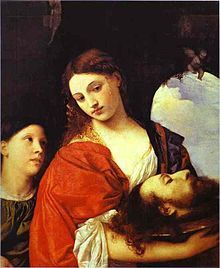 Salome by Titian (ca. 1515)
Salome by Titian (ca. 1515)Then, quite some time later, I was looking through my art books for a book to help my son do a project on William Blake, and I found my book on Titian, which I had not looked at for a very long time. Ah, I thought, wasn’t he Venetian? I pulled it out, and flicked through the colour plates, and saw the face that he painted again and again, and remembered I had read somewhere that it was his mistress that he painted, and that she had been a courtesan. At once everything just clicked into place in my mind. It was such a magical revelation. I spent the next few weeks and even months looking at all Titian’s paintings, reading everything I could find on him, and compiling a time line.
It was simply serendipity.
You've added many creative touches to a fairy tale that everyone believes they know. How did you come up with the (rather grisly!) explanation for how Rapunzel's amazingly long hair came to be?
That was a problem I pondered for a long time. If I was to tell Rapunzel as a historical novel, I couldn’t simply have her hair grow so long magically. Besides, I never understood why her hair had to be so impossibly long. Why not simply climb up stairs or a ladder or a rope? And the motif of the impossibly long hair is a key motif to the story – take it away and you are no longer telling Rapunzel. I wondered and worried about it for a long time, and read lots of books and blogs about hair, and its symbolic meaning, and the sometimes odd fetishes people have about it – they love red hair, or hate it violently, or they love long hair, or no hair, or they like to eat it, which is potentially life-threatening since hair cannot be digested. Anyway, one day, I was out walking at my brother’s farm, and my mind was drifting along the story quite without any purpose in mind, and suddenly the idea came to me. It all fitted so well, it was like finding that missing piece of a jigsaw that you’ve been searching for such a long time. I ran home, and my brother thought I must’ve seen a snake because I never run, but I just panted, ‘no ... had an idea ... where’s my notebook ...’ and that was it.
Bitter Greens has stories nestled within stories, with Margherita's tale, Selena's narrative, and Charlotte-Rose's story framing the others... not just her time at the abbey in 1697, but it also looks back to her childhood and important episodes during her years at Versailles. Everything fits together beautifully, but I can't imagine the challenge of structuring it all! How did you keep everything straight in your mind?
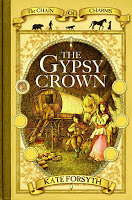 I began by wanting to rewrite Rapunzel, which led me to Giambattista Basile and the idea of Renaissance Venice as my setting. I did a lot of reading and research into that period, and I kept a notebook that chronicles all my notes and ideas and wild jottings. But then, quite a long way down the track, I came across the story of Charlotte-Rose de la Force, which set my imagination on fire. Eventually I began a second notebook for her story, with all my notes on life at the court of the Sun-King, and life in 17th century convents and so forth. I built a framework for the story, with ideas about how and when the key events in each story could touch each other, and then I began to write Charlotte-Rose’s story, which was the most complex and difficult to write. I wrote her tale from beginning to end without pause, noting key places to break the narrative. I then began Margherita’s story, and wrote it in the same way, from first line to last line, inserting each section into Charlotte-Rose’s story at the key break points. Only then did I turn my attention to the story of the witch.
I began by wanting to rewrite Rapunzel, which led me to Giambattista Basile and the idea of Renaissance Venice as my setting. I did a lot of reading and research into that period, and I kept a notebook that chronicles all my notes and ideas and wild jottings. But then, quite a long way down the track, I came across the story of Charlotte-Rose de la Force, which set my imagination on fire. Eventually I began a second notebook for her story, with all my notes on life at the court of the Sun-King, and life in 17th century convents and so forth. I built a framework for the story, with ideas about how and when the key events in each story could touch each other, and then I began to write Charlotte-Rose’s story, which was the most complex and difficult to write. I wrote her tale from beginning to end without pause, noting key places to break the narrative. I then began Margherita’s story, and wrote it in the same way, from first line to last line, inserting each section into Charlotte-Rose’s story at the key break points. Only then did I turn my attention to the story of the witch.My original plan had been to interweave the three stories like a braid, so that the thematic structure of the book symbolically reflected the key motif of the hair. However, Charlotte-Rose’s story had grown so long and become the dominant narrative, and I knew the witch’s story would be much shorter. I thought of it as being the dark heart of the novel, and so that was how I structured it. Once again I wrote the witch’s story from beginning to end without pause, and then I found the best place to put it. It’s a key turning point in the novel. The two stories –Charlotte-Rose and Margherita’s points of view – spin into it, and then they spin out of it, but with all the reader’s expectations and understanding changed.
What led you to write a historical novel for adults (rather than history-tinged fantasy) at this point in your career?
I have always loved reading historical fiction, it’s my favourite genre. Basically I’ll read any type of story if it’s set in the past – historical romance, historical mystery, historical fantasy, historical biography – I love them all. And I write what I love to read. Every book I have ever written has been rich in history, magic, intrigue and romance. In some books, the balance is more towards history, like in my historical novel for children, The Gypsy Crown. In others, the focus is more on magic, like in the Witches of Eileanan fantasy series. For me, the shape and mood of the novel is always shaped by the story itself. Bitter Greens felt right to me told in this way, with a strong historical setting and the inclusion of real life characters such as the artist Titian and the fairytale tellers, Charlotte-Rose de la Force and Charles Perrault.
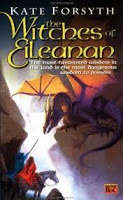 Earlier you'd told me that Bitter Greens was the creative component of a PhD you're undertaking at the University of Technology in Sydney. What's it like to write a novel as part of an academic degree? How does the process differ from what you're used to?
Earlier you'd told me that Bitter Greens was the creative component of a PhD you're undertaking at the University of Technology in Sydney. What's it like to write a novel as part of an academic degree? How does the process differ from what you're used to? One of my earliest published novels, Full Fathom Five, was written as the thesis for my Masters degree in Creative Writing, and I wrote the first two books of the Witches of Eileanan series whilst studying the same degree, so it was not a new experience for me. The primary difference is having to show early work to someone and receive critical appraisal of it. I do find that difficult. I don’t like to show anyone my work until I have had a chance to edit and polish and cut and change it substantially. However, I was eager to learn as much as I could, and so I welcomed my supervisor’s insights into my work. In general, the secret to writing a novel is discipline (particularly one that is so big and complex). I think undertaking a doctorate is all about discipline as well – it just means taking on a double burden of work for a while.
~
Bitter Greens was published by Random House Australia in April at $32.99 Aus (trade pb, 554pp). For readers outside Australia, I can personally recommend Fishpond, which offers free shipping worldwide. Visit Kate Forsyth's website for more details on her inspirations for Bitter Greens.
Published on May 25, 2012 17:00
May 24, 2012
Book review: The Queen's Secret, by Victoria Lamb
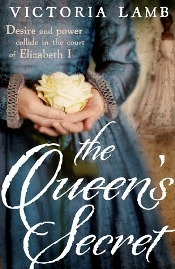 Victoria Lamb’s energetic fiction debut opens in 1575, as Elizabeth I’s large and rambunctious court makes its summer progress to Kenilworth Castle in Warwickshire. Robert Dudley, the ambitious Earl of Leicester, is the palace's owner and the Queen’s host, and he yearns to be much more. Since 42-year-old Elizabeth is approaching the end of her childbearing years, this will be Robert’s last-ditch attempt to convince her to wed him.
Victoria Lamb’s energetic fiction debut opens in 1575, as Elizabeth I’s large and rambunctious court makes its summer progress to Kenilworth Castle in Warwickshire. Robert Dudley, the ambitious Earl of Leicester, is the palace's owner and the Queen’s host, and he yearns to be much more. Since 42-year-old Elizabeth is approaching the end of her childbearing years, this will be Robert’s last-ditch attempt to convince her to wed him.As he conducts an illicit affair with her younger cousin Lettice, the unhappy Countess of Essex, Elizabeth weighs her marital options, and her spymaster Walsingham begins unraveling an Italian Catholic plot against her life. Well done as they are, the novel’s singularity lies not in its interpretations of famous Tudor names, though, but in its gentle yet strong teenage heroine, Lucy Morgan – and the author’s full engagement with each scene she writes.
Lucy arrives as a court entertainer, and her black skin and clear soprano voice make her an exotic curiosity. Although grateful for the favor she’s shown, she feels anxious when both Lord Robert and the Queen use her to spy on the other. Not even her guardian, the teasingly-named Goodluck – one of Walsingham’s best agents – can keep her safe.
Lamb illuminates every detail of the era, from the splendid elegance of the Queen’s Privy Garden to the castle’s stinking alleyways to the heavy weight of Elizabeth’s jeweled skirts, whose delicate fabric will take her ladies hours to repair, to their chagrin. Even 11-year-old Will Shakespeare makes some appearances while on a visit from Stratford with his father. This feels like a calculated move at this stage in his young life. (The dust jacket reveals the author's plans to write a series about Lucy, his future “Dark Lady.”)
Although this isn’t literary fiction, the characters and their relationships are the focus. The Queen’s secret from the title takes a good while to be revealed, and it's worth waiting for, as it turns out to be the reason for some of her biggest decisions. Not everyone will feel comfortable witnessing Elizabeth's most intimate scenes, despite their importance to the storyline, but her struggle between her private desires and public role feels genuine. She hates seeing her favorite with another woman, and despite his suspected adultery with Lettice, there's little she can do without causing political harm: “To admit jealousy would be to mark her out as her father’s daughter, driven beyond reason and diplomacy by the urges of her body.”
The main false note in their triangle comes from Lettice herself. She’s in a difficult position as an abused wife whose husband is presently away in Ireland; nonetheless, she’s no match for her Queen except in looks. Lucy may be less than half her age, but she has twice her maturity.
The actual plot is rather diffuse, and the suspense doesn’t amp up until the very end, but there’s so much activity, so much to observe and participate in, that this doesn't matter one bit. The writing is crisp and clean, and readers will feel involved in every aspect of life during their 19-day stay at Kenilworth. For those who want to imagine this particular moment in time, with all the personal dramas happening all around, this book is the place to be.
The Queen's Secret was published by Bantam Press (UK) in February at £12.99 (hb, 368pp, including detailed note).
Published on May 24, 2012 07:00
May 19, 2012
A look at A Gentleman of Fortune, by Anna Dean
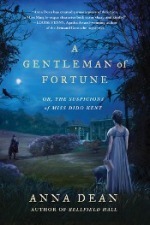 "For anyone at all addicted to overhearing conversation and gossip, there is nowhere quite like a fashionable circulating library, for, among its shelves, rumours circulate quite as freely as novels and poems — and a great deal more freely than serious histories."
"For anyone at all addicted to overhearing conversation and gossip, there is nowhere quite like a fashionable circulating library, for, among its shelves, rumours circulate quite as freely as novels and poems — and a great deal more freely than serious histories." — from A Gentleman of Fortune, p.75
Anna Dean's A Gentleman of Fortune came out in trade paperback in January, but I found it perfectly timed for a lazy weekend in late spring. I wanted something light and entertaining that could easily be sandwiched between two heavier review assignments, and based on my reading of book 1 in the series, Bellfield Hall , I guessed it would fit the bill. Set in 1806, it involves an overbearing woman's possible murder, dark secrets among the English gentry, some indiscreet spying on one's neighbors, and the wanton destruction of a library book.
The "gentleman of fortune" is Mr Henry Lansdale, who became the new owner of Knaresborough House in Richmond, Surrey, upon his elderly aunt's untimely passing. But if you believe Mrs Midgely, the spiteful gossip that she is, Mrs Lansdale's passing might have been somewhat... planned. Dido Kent's cousin Flora can't stand to hear anything negative about her neighbor, who is cheery, handsome, and a proper gentleman. Then the local apothecary reveals that Mrs Lansdale's evening drink on the night she died had contained four times her usual dose of extra-strength laudanum. Until the magistrate makes formal charges, the social proprieties must be observed, but tongues begin wagging.
Dido is a spinster of mature years — she's 35 — who's fresh off solving a crime at Bellfield Hall. This has given her confidence a great boost. She's not used to being on holiday, and her boredom and natural inquisitiveness make her wonder who administered the fatal dose. Her witty observations on rural society in the late Georgian era are honest and direct — and of the type that only someone firmly entrenched within that society could have. "Besides that half-pleasurable sorrow which is always felt at the death of a fine lady one hardly knows," she writes in a letter to her sister Eliza, "there is a great distrust of the nephew. For it has not passed without notice that he has lost a remarkably tyrannical relation and gained a very fine inheritance."
In any novel set in Jane Austen country, one comes to expect not only wise social commentary but pitch-perfect language and fine descriptions of all the accoutrements of day-to-day life. All of these are here in spades, plus there's more than that. Within this multifaceted puzzle, clues are cleverly laid amidst what appears to be mere window-dressing, so paying close attention is key. Dido is up to the challenge she sets for herself, to the regret of her suitor, Mr William Lomax, and she doesn't appreciate his calling her suspicions irrational. Their romance doesn't proceed as smoothly as she'd hoped... but she knew she was too old for love, anyway.
For me, this wasn't quite as tight a novel as Bellfield Hall, and it took a while for some of the secondary characters — Mrs Lansdale's and Mrs Midgely's relations and boarders, all of whom are Miss So-and-So — to make themselves clear in my mind. But I still enjoyed the read considerably, so much so that I started and finished on the same day.
A Gentleman of Fortune was published by Minotaur at $14.99 / $16.99 in Canada in January (trade pb, 335pp). Allison & Busby is the UK publisher (£7.99).
Published on May 19, 2012 17:51
May 12, 2012
Historical fiction picks at BEA 2012
This is my annual post on historical fiction picks at BEA. As I do every year, I debate whether it's worth heading out to NYC on my own dime to spend a few days in the brightly lit, dizzying, exhausting exhibit hall amid huge crowds of people. But once again, I decided to spring for the trip - it's New York, it's exciting, it's informative, it's time away from my freezing office, and it's book heaven. Unlike the past two BEAs, I won't be attending the book blogger con, but I'll be there all three days of the show. Who else is going?
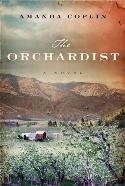 This post will be updated if/when the BEA previews from LJ and Kirkus appear, and new signings are posted all the time at BEA's site, so watch this space. The Books@BEA site for 2012 should be going live any day now, too. For now, I'm basing my picks on BEA's list of autographing sessions and on Publishers Weekly's "Galleys to Grab" focus (with a special thanks to my library for their institutional subscription). All of which is to say, what's listed below isn't all... there will be more. Updates and corrections welcome. New entries are marked with
This post will be updated if/when the BEA previews from LJ and Kirkus appear, and new signings are posted all the time at BEA's site, so watch this space. The Books@BEA site for 2012 should be going live any day now, too. For now, I'm basing my picks on BEA's list of autographing sessions and on Publishers Weekly's "Galleys to Grab" focus (with a special thanks to my library for their institutional subscription). All of which is to say, what's listed below isn't all... there will be more. Updates and corrections welcome. New entries are marked with  .
.
For bloggers who are BEA newbies: if a fall book you're interested in reviewing isn't included below, it's still appropriate to ask a publicist at the publisher's booth about obtaining a copy. They may have ARCs stashed away at the booth, or they may be able to mail you one after you get home. Have business cards made up and bring them along (I recommend Vistaprint) to hand out - people will ask for them! - and feel free to take one of their cards in return. Both politeness and specific knowledge/interest about a particular title can go a long way.
These listings were correct when I wrote them, though please cross-check these dates/times with the BEA site or program book to avoid possible disappointment. Also note - the BEA site is listing the locales for traditional autographing (big separate section toward the back of the exhibit hall) as Booths rather than Tables, which is what they'd used to be called, and what I've listed them as, below, to make the difference clearer.
~Galleys to Grab~
 Little, Brown (Booth 3627)
Little, Brown (Booth 3627)
Liza Klaussmann, Tigers in Red Weather - family drama on Martha's Vineyard in the post-WWII period and the 1960s. [see on Goodreads]
Doubleday/Random House (Booth 3940)
Chris Bohjalian, The Sandcastle Girls - a literary love story moving from Aleppo, Syria, in 1915 to modern New York. [see on Goodreads]
Vincent Lam, The Headmaster's Wager - love, betrayal and sacrifice during the Vietnam War. Lam is a past Giller Prize winner. [see on Goodreads]
Hyperion/Voice (Meeting Rm 7243)
J.R. Moehringer, Sutton - from this Pulitzer-winning journalist, his fiction debut, biographical fiction about Willie Sutton, "the most beloved bank robber in American history" (per publisher). [see on Goodreads; not much there yet as far as a listing].
Grand Central (Booth 3621-22)
 Hallie Rubenhold, Mistress of My Fate - a romp through late 18th-century England and France with title character Henrietta Lightfoot, described as "courtesan, adventuress, spy and erstwhile murderess" by the original UK press release. This is its US debut. [see on Goodreads]
Hallie Rubenhold, Mistress of My Fate - a romp through late 18th-century England and France with title character Henrietta Lightfoot, described as "courtesan, adventuress, spy and erstwhile murderess" by the original UK press release. This is its US debut. [see on Goodreads]
Grove/Atlantic (Booth 4139)
Robert Olen Butler, The Hot Country - intrigue and espionage in this high-powered thriller set during Mexico's civil war in 1914. [see on Goodreads]
HarperCollins (Booth 3339)
Amanda Coplin, The Orchardist - in Washington State's Cascades region in the early 20th century, a solitary orchardist's life changes when two scared, pregnant girls turn up on his land. It's a real treat for literary fiction readers who love strongly evoked settings. [see on Goodreads]
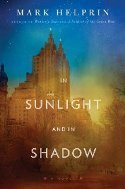 Riverhead/Penguin Group (Booth 4028)
Riverhead/Penguin Group (Booth 4028)
Emma Straub, Laura Lamont's Life in Pictures - a Midwestern girl becomes a film star during Hollywood's Golden Age. [see on Goodreads]
Houghton Mifflin Harcourt (Booth 3447)
Mark Helprin, In Sunlight and In Shadow - a huge, sweeping love story set in 1947 New York. Looks like the type of epic you'll want to sink into. [see on Goodreads]
Sourcebooks (Booth 4112)
Iris Anthony, The Ruins of Lace - the mad passion for forbidden Flemish lace will be either the salvation or ruin of two women in 17th-century France. You'll have heard of Tulipmania... this is Lacemania. Anthony is a pseudonym for a widely-selling historical novelist. [see on Goodreads]
~Author signings~
Tuesday, June 5th
10:30-11:30am (Table 16)
Elizabeth Cunningham, Red-Robed Priestess - spiritual, irreverent, earthy historical fiction about Maeve, the Celtic Mary Magdalene, and her life in the British Isles after the death of Jesus. Fourth in series, though readers say it can stand alone. [see on Goodreads]
11am-12pm (Booth 4139)
Lawrence Norfolk, John Saturnall's Feast - food, religious fanaticism, ancient magic, and one man's intriguing life during the English Civil War. Per what I've read, it's accessible literary fiction. [see on Goodreads]
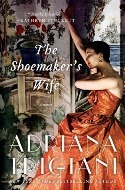 11:30am-12:30pm (Table 17)
11:30am-12:30pm (Table 17)
Debra Dean, The Mirrored World - literary biographical fiction about Russia's legendary St. Xenia. I wrote about this earlier in my bibliography on Russian historical settings. [see on Goodreads]
11:30am-12:30pm (Table 19)
James R. Benn, Death's Door - the 7th and latest entry in his Billy Boyle WWII mystery series. In this excursion, Boyle's girlfriend Diana goes missing during an undercover mission at the Vatican. [see on Goodreads]
12pm-12:30pm (Table 22)
Selden Edwards, The Lost Prince - a companion novel to Edwards' imaginative and time-bending The Little Book, which I loved, and I enjoyed this one just as much. The story of a courageous woman, a prophetic journal, and how they affect major 20th-century events. [see on Goodreads]
1:30pm-2pm (Table 20)
Cynthia Drew, City of Slaughter - the lives of two Russian Jewish immigrant young women on New York's Lower East Side in the early 1900s. The infamous Triangle Shirtwaist Fire plays a role in the story, which may explain the title. [see on Goodreads]
 3pm-4pm (Table 16)
3pm-4pm (Table 16)
Adriana Trigiani, The Shoemaker's Wife - an epic of the Italian immigrant experience, based on her grandparents' personal history. I have a copy and will read/review when my schedule lets up a bit. [see on Goodreads]
3pm-4pm (Table 12)
Laura Amy Schlitz, Splendors and Glooms - YA fiction. A Victorian gothic thriller about a wealthy child's disappearance, London's criminal world, and the dark comedy of puppets. Schlitz is a Newbery medalist... there will be high expectations and long lines. [See on Goodreads]
Wednesday, June 6th
11-11:30am (Table 17)
Karen Engelmann, The Stockholm Eight - I've had my eye on this novel for a while (it used to be listed as The Stockholm Octavo, and you'll find some writeups on Goodreads for it there). A glittering mystery set during Sweden's age of enlightenment in the late 18th century. [see on Goodreads under the new title]
11am-12pm (Table 10)
Liza Klaussman, Tigers in Red Weather - see above under Galleys to Grab.
1-1:30pm (Table not given)
Patricia McCormick, Never Fall Down - YA fiction about a boy who survived the Khmer Rouge in 1970s Cambodia.
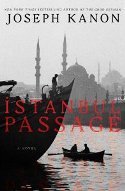 1pm-2pm (Booth 3339)
1pm-2pm (Booth 3339)
Bethany Griffin, Masque of the Red Death - YA novel that reimagines the story of Edgar Allan Poe.
4-4:30pm (Table 14)
Joseph Kanon, Istanbul Passage - dark espionage fiction set in the unexplored fictional territory of post-WWII Istanbul. [see on Goodreads]
Thursday, June 7th
10:30am-11:30am (Table 11)
J. R. Moehringer, Sutton - see above under Galleys to Grab.
 This post will be updated if/when the BEA previews from LJ and Kirkus appear, and new signings are posted all the time at BEA's site, so watch this space. The Books@BEA site for 2012 should be going live any day now, too. For now, I'm basing my picks on BEA's list of autographing sessions and on Publishers Weekly's "Galleys to Grab" focus (with a special thanks to my library for their institutional subscription). All of which is to say, what's listed below isn't all... there will be more. Updates and corrections welcome. New entries are marked with
This post will be updated if/when the BEA previews from LJ and Kirkus appear, and new signings are posted all the time at BEA's site, so watch this space. The Books@BEA site for 2012 should be going live any day now, too. For now, I'm basing my picks on BEA's list of autographing sessions and on Publishers Weekly's "Galleys to Grab" focus (with a special thanks to my library for their institutional subscription). All of which is to say, what's listed below isn't all... there will be more. Updates and corrections welcome. New entries are marked with  .
.For bloggers who are BEA newbies: if a fall book you're interested in reviewing isn't included below, it's still appropriate to ask a publicist at the publisher's booth about obtaining a copy. They may have ARCs stashed away at the booth, or they may be able to mail you one after you get home. Have business cards made up and bring them along (I recommend Vistaprint) to hand out - people will ask for them! - and feel free to take one of their cards in return. Both politeness and specific knowledge/interest about a particular title can go a long way.
These listings were correct when I wrote them, though please cross-check these dates/times with the BEA site or program book to avoid possible disappointment. Also note - the BEA site is listing the locales for traditional autographing (big separate section toward the back of the exhibit hall) as Booths rather than Tables, which is what they'd used to be called, and what I've listed them as, below, to make the difference clearer.
~Galleys to Grab~
 Little, Brown (Booth 3627)
Little, Brown (Booth 3627)Liza Klaussmann, Tigers in Red Weather - family drama on Martha's Vineyard in the post-WWII period and the 1960s. [see on Goodreads]
Doubleday/Random House (Booth 3940)
Chris Bohjalian, The Sandcastle Girls - a literary love story moving from Aleppo, Syria, in 1915 to modern New York. [see on Goodreads]
Vincent Lam, The Headmaster's Wager - love, betrayal and sacrifice during the Vietnam War. Lam is a past Giller Prize winner. [see on Goodreads]
Hyperion/Voice (Meeting Rm 7243)
J.R. Moehringer, Sutton - from this Pulitzer-winning journalist, his fiction debut, biographical fiction about Willie Sutton, "the most beloved bank robber in American history" (per publisher). [see on Goodreads; not much there yet as far as a listing].
Grand Central (Booth 3621-22)
 Hallie Rubenhold, Mistress of My Fate - a romp through late 18th-century England and France with title character Henrietta Lightfoot, described as "courtesan, adventuress, spy and erstwhile murderess" by the original UK press release. This is its US debut. [see on Goodreads]
Hallie Rubenhold, Mistress of My Fate - a romp through late 18th-century England and France with title character Henrietta Lightfoot, described as "courtesan, adventuress, spy and erstwhile murderess" by the original UK press release. This is its US debut. [see on Goodreads]Grove/Atlantic (Booth 4139)
Robert Olen Butler, The Hot Country - intrigue and espionage in this high-powered thriller set during Mexico's civil war in 1914. [see on Goodreads]
HarperCollins (Booth 3339)
Amanda Coplin, The Orchardist - in Washington State's Cascades region in the early 20th century, a solitary orchardist's life changes when two scared, pregnant girls turn up on his land. It's a real treat for literary fiction readers who love strongly evoked settings. [see on Goodreads]
 Riverhead/Penguin Group (Booth 4028)
Riverhead/Penguin Group (Booth 4028)Emma Straub, Laura Lamont's Life in Pictures - a Midwestern girl becomes a film star during Hollywood's Golden Age. [see on Goodreads]
Houghton Mifflin Harcourt (Booth 3447)
Mark Helprin, In Sunlight and In Shadow - a huge, sweeping love story set in 1947 New York. Looks like the type of epic you'll want to sink into. [see on Goodreads]
Sourcebooks (Booth 4112)
Iris Anthony, The Ruins of Lace - the mad passion for forbidden Flemish lace will be either the salvation or ruin of two women in 17th-century France. You'll have heard of Tulipmania... this is Lacemania. Anthony is a pseudonym for a widely-selling historical novelist. [see on Goodreads]
~Author signings~
Tuesday, June 5th
10:30-11:30am (Table 16)
Elizabeth Cunningham, Red-Robed Priestess - spiritual, irreverent, earthy historical fiction about Maeve, the Celtic Mary Magdalene, and her life in the British Isles after the death of Jesus. Fourth in series, though readers say it can stand alone. [see on Goodreads]
11am-12pm (Booth 4139)
Lawrence Norfolk, John Saturnall's Feast - food, religious fanaticism, ancient magic, and one man's intriguing life during the English Civil War. Per what I've read, it's accessible literary fiction. [see on Goodreads]
 11:30am-12:30pm (Table 17)
11:30am-12:30pm (Table 17)Debra Dean, The Mirrored World - literary biographical fiction about Russia's legendary St. Xenia. I wrote about this earlier in my bibliography on Russian historical settings. [see on Goodreads]
11:30am-12:30pm (Table 19)
James R. Benn, Death's Door - the 7th and latest entry in his Billy Boyle WWII mystery series. In this excursion, Boyle's girlfriend Diana goes missing during an undercover mission at the Vatican. [see on Goodreads]
12pm-12:30pm (Table 22)
Selden Edwards, The Lost Prince - a companion novel to Edwards' imaginative and time-bending The Little Book, which I loved, and I enjoyed this one just as much. The story of a courageous woman, a prophetic journal, and how they affect major 20th-century events. [see on Goodreads]
1:30pm-2pm (Table 20)
Cynthia Drew, City of Slaughter - the lives of two Russian Jewish immigrant young women on New York's Lower East Side in the early 1900s. The infamous Triangle Shirtwaist Fire plays a role in the story, which may explain the title. [see on Goodreads]
 3pm-4pm (Table 16)
3pm-4pm (Table 16)Adriana Trigiani, The Shoemaker's Wife - an epic of the Italian immigrant experience, based on her grandparents' personal history. I have a copy and will read/review when my schedule lets up a bit. [see on Goodreads]
3pm-4pm (Table 12)
Laura Amy Schlitz, Splendors and Glooms - YA fiction. A Victorian gothic thriller about a wealthy child's disappearance, London's criminal world, and the dark comedy of puppets. Schlitz is a Newbery medalist... there will be high expectations and long lines. [See on Goodreads]
Wednesday, June 6th
11-11:30am (Table 17)
Karen Engelmann, The Stockholm Eight - I've had my eye on this novel for a while (it used to be listed as The Stockholm Octavo, and you'll find some writeups on Goodreads for it there). A glittering mystery set during Sweden's age of enlightenment in the late 18th century. [see on Goodreads under the new title]
11am-12pm (Table 10)
Liza Klaussman, Tigers in Red Weather - see above under Galleys to Grab.
1-1:30pm (Table not given)
Patricia McCormick, Never Fall Down - YA fiction about a boy who survived the Khmer Rouge in 1970s Cambodia.
 1pm-2pm (Booth 3339)
1pm-2pm (Booth 3339)Bethany Griffin, Masque of the Red Death - YA novel that reimagines the story of Edgar Allan Poe.
4-4:30pm (Table 14)
Joseph Kanon, Istanbul Passage - dark espionage fiction set in the unexplored fictional territory of post-WWII Istanbul. [see on Goodreads]
Thursday, June 7th
10:30am-11:30am (Table 11)
J. R. Moehringer, Sutton - see above under Galleys to Grab.
Published on May 12, 2012 11:00
May 7, 2012
Three new reviews
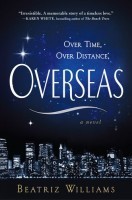 Careful readers may notice that I've temporarily stopped accepting review queries. This isn't because I've ceased writing reviews... quite the opposite. My TBR has grown to enormous proportions, and it didn't seem fair to take on more assignments when so many books were already in the pipeline.
Careful readers may notice that I've temporarily stopped accepting review queries. This isn't because I've ceased writing reviews... quite the opposite. My TBR has grown to enormous proportions, and it didn't seem fair to take on more assignments when so many books were already in the pipeline.I've also been working my way through a growing pile of ARCs sent to me by Booklist, many of them by debut historical novelists. Not that I'm complaining... my editor tends to pick better books for me than I do for myself, and odd as it seems, sometimes I like not having to choose what to read next. When left to my own devices, I can wander around my home library for hours, perplexed by this wrenching decision (and wasting precious reading time in the process).
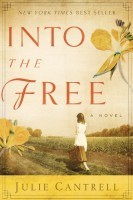 Most of these books have been excellent, and I'll be reprinting a selection of the reviews on the blog after they appear in the magazine.
Most of these books have been excellent, and I'll be reprinting a selection of the reviews on the blog after they appear in the magazine.Besides all this, three of my reviews just went online at the Historical Novel Society's site. Judging by everything I've read so far in 2012, it's a very good year for historical fiction.
Overseas, by Beatriz Williams (Putnam, official pub date May 10th) is a gushy, epic love story that combines modern Wall Street, the popular WWI era, time travel, romance, mystery, and more. Did I mention the to-die-for Edwardian hero? It's great summer escapism. I'm afraid I got a bit gushy in my review in return... I couldn't help it.
Julie Cantrell's Into the Free (David C. Cook, Feb.) is a very different sort of historical novel. Gritty yet hopeful, it tells of the painful coming of age of a poverty-stricken young woman in Depression-era Mississippi. Although you'll find in the inspirational section of your local bookstore, there's no reason it should be limited to a Christian audience.
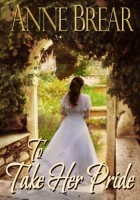 Finally, Anne Brear's To Take Her Pride (Knox Robinson, March), a saga of Victorian-era Yorkshire, was a delightful surprise. I got it as a Kindle freebie during the publisher's promotion weekend and meant to read just the beginning - I was in the middle of something else - and found myself wanting to return to the story. What began as a pleasant enough historical romance developed into much more. This was the first review I've ever done from an electronic copy, too.
Finally, Anne Brear's To Take Her Pride (Knox Robinson, March), a saga of Victorian-era Yorkshire, was a delightful surprise. I got it as a Kindle freebie during the publisher's promotion weekend and meant to read just the beginning - I was in the middle of something else - and found myself wanting to return to the story. What began as a pleasant enough historical romance developed into much more. This was the first review I've ever done from an electronic copy, too.The links above lead to my writeups. Both the Williams and Cantrell are debuts, and I've since bought several of Anne Brear's earlier novels (she used to write as Anne Whitfield).
Published on May 07, 2012 10:57



